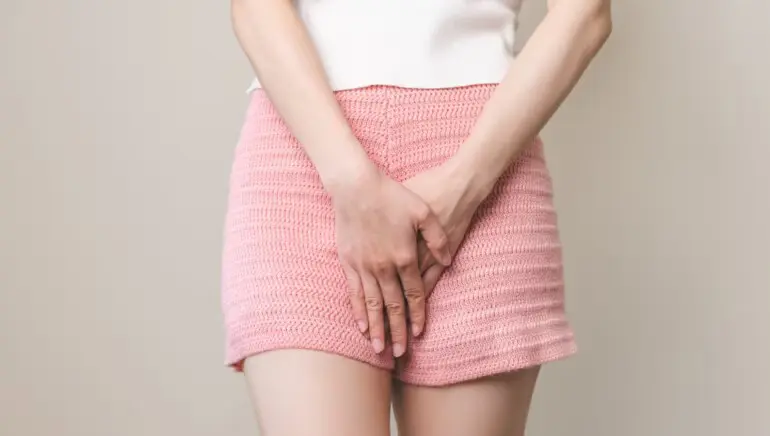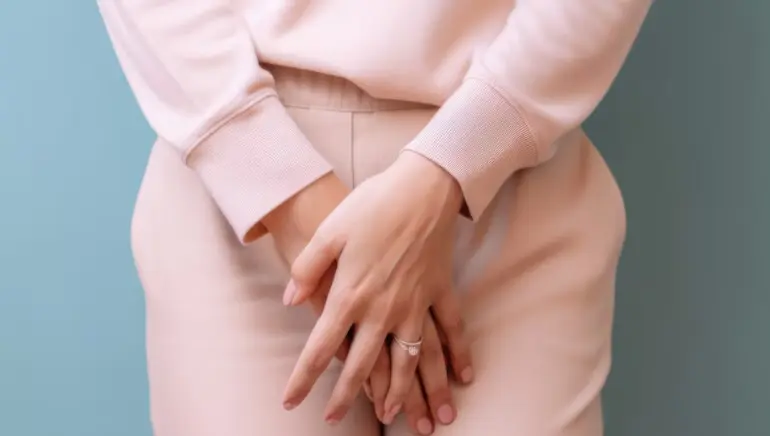Vulvovaginitis: Causes, Symptoms, Best 1 Prevention
Vulvovaginitis is an inflammation of the vagina. Here’s all you need know about vulvovaginitis, including its causes and prevention.
Vaginal inflammation can be painful and uncomfortable. Image courtesy: Adobe Stock
The vagina is sensitive and susceptible to complications such as inflammation and infection. Vaginal inflammation, often known in medical terminology as vaginitis or vulvovaginitis, is a common issue that many women have at some point in their life. It can be unpleasant, resulting in discharge, discomfort, and itching. Vaginitis can also affect the external genital region, or vulva. Typical symptoms include burning, itching, strange discharge, and foul odor. However, including certain preventative methods might help if you have vulvovaginitis.
[web_stories title=”false” excerpt=”false” author=”false” date=”false” archive_link=”true” archive_link_label=”” circle_size=”150″ sharp_corners=”false” image_alignment=”left” number_of_columns=”1″ number_of_stories=”5″ order=”DESC” orderby=”post_title” view=”circles” /]
What is vulvovaginitis?
“Vulvovaginitis is a swelling or irritation of the vulva (the outside portion) and vagina (the birth canal). Infections, allergens, allergies, and hormonal fluctuations are all potential causes of this illness. Dr. Pratibha Singhal, a gynaecologist and obstetrician, says it affects women of all ages but is most frequent in young girls and women of reproductive age. These symptoms can result from a bacterial, yeast, or viral infection. In certain cases, vaginitis is spread during sexual intercourse. Other causes may include vaginal dryness and a lack of oestrogen.
Vulvovaginitis is an inflammation of the vagina. Image courtesy: Adobe Stock
What is the cause of vulvovaginitis?
1. Bacterial Vaginosis (BV).
Bacterial vaginosis (BV) is a common vaginal infection caused by an imbalance in the normal bacterial flora of the vagina. According to a 2023 study published in the StatsPearl Journal, the proportion of Lactobacilli in BV decreases while other forms of bacteria, such as Gardnerella vaginalis and several anaerobes, increase. This is among the most prevalent causes of vulvovaginitis.
2. Candida Vulvovaginitis
Candida vulvovaginitis, often known as vaginal yeast infection, is caused by a rise in Candida (a kind of yeast) in the vagina, according to a 2024 research published in the StatsPearl journal. This causes genital discomfort and thick, white vaginal discharge with a cottage cheese consistency.
Also Read: Vulvovaginitis: Causes, Symptoms, and Diagnosis
3. Chemical irritations
Vulvovaginitis can be caused by particular chemicals present in soaps, feminine sprays, perfume, and vaginal contraceptives, according to one expert.
4. Sexually transmitted diseases, or STIs
Vulvovaginitis may be caused by STI trichomonas vaginitis, according to a 2022 study published in the StatsPearl journal. This infection can cause vaginal pain, itching, and profuse discharge. The discharge might be yellow, green, or gray. It frequently emits a pungent odor. Vaginitis can be caused by chlamydia, gonorrhea, or herpes.
5. Environmental factors:
Poor hygiene and allergies may also contribute to this illness. Tight clothes can irritate the skin while also trapping moisture. Irritated skin is more susceptible to vulvovaginitis than healthy skin. According to the expert, irritation might also cause a delay in recovery.
-Vaginal discharge has an odd color, consistency, or odor.
-Itching and irritation near the vulva and vagina.
The vulva is red and swollen.
-Pain or burning during urine or intercourse.
-Spot or mild bleeding in between cycles.
How to avoid vulvovaginitis?
Vulvovaginitis can be avoided by practicing proper hygiene, avoiding irritants, and adopting healthy lifestyle habits. Here are some natural cures and recommendations for preventing vulvovaginitis.
1. Maintain good hygiene.
“To clean your private areas, use warm water and a gentle, unscented soap. Avoid using strong soaps or douches since they might upset the natural balance of bacteria and yeast. Also, the specialist suggests wiping from front to back after using the toilet to avoid bacteria from the anus from entering the vagina.
Also Read:
Vaginal discharge that is pink might have several reasons. Picture sourced from Adobe Stock
2. Probiotics.
Probiotics help the body produce healthy bacteria capable of battling the germs that stimulate bacteria. According to a 2019 study published in the International Journal of Environment and Public Health, probiotic therapy may offer both immediate and long-term benefits in the treatment of bacterial vaginosis, one of the most frequent causes of the illness.
3. Wear proper clothes.
“Wear cotton underwear and avoid tight-fitting clothing. Cotton improves air circulation and reduces moisture buildup, which can increase bacterial and yeast development. Also, change out of wet swimsuits or sweaty training clothing as soon as possible to avoid extended moisture exposure, advises the expert.
Wear suitable gear to prevent vaginal infections! Image credit: Adobe Stock.
4. Cranberry Juice.
Cranberry juice is renowned for its capacity to prevent and control urinary tract infections, according to a 2021 study published in the Food Frontiers Journal. It also reduces the risk of vulvovaginitis. Drinking unsweetened cranberry juice is a common treatment for UTIs and vaginitis. If you don’t want to drink unsweetened juice, try cranberry juice tablets instead.
5. Avoid irritants.
“Do not use scented tampons, pads, toilet paper, or feminine sprays. These might cause irritation in the delicate vaginal region. Also, if you wear panty liners, use unscented ones and replace them regularly to keep the region dry,” says the expert.
Things to bear in mind!
These preventative strategies and home therapies may assist with vulvovaginitis, but they do not replace medical therapy. If you have vaginitis, you should consult a doctor to discover the reason and receive appropriate therapy.
Health Conscious Plus
Welcome to Health Conscious Plus Find health insights, disease management tips, meal plans, and mindful living strategies for a healthier life.




